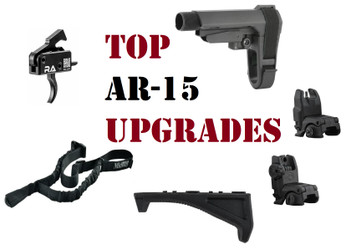The Best AR-15 Upgrades in 2023
Posted by Gun Builders Depot on Apr 6th 2021
You just finished putting together your first AR-15. Or, maybe you simply bought a "retail" rifle that came fully assembled. Either way, it's probably a good shooter. Good, but not perfect. The AR-15 platform's been developed for decades and it remains one of the most popular rifles sold in America. That means there are literally thousands of simple, effective upgrades you can throw on your new rifle (or AR pistol) to make it even more comfortable, accurate, and enjoyable to shoot. We're covering the best AR-15 upgrades to consider.
1. Drop-in Trigger
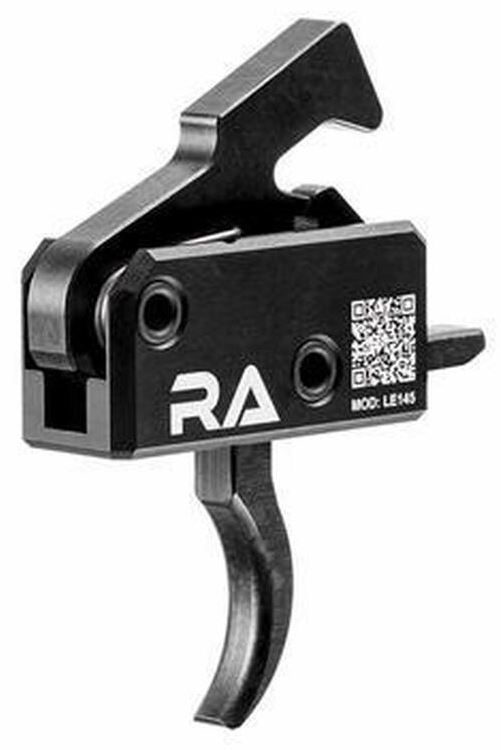
The average parts kit will provide you with a working trigger and hammer, but they tend to leave a lot on the table, so to speak, when it comes to overall trigger quality and how your AR feels in your hands. Most triggers provide a simple, single-stage function with a relatively high pull weight of 4.5 to 5.5 pounds. Even after breaking in your lower receiver's fire control group, you may find the trigger in your lower feels gritty, or too springy.
A drop-in trigger fixes all of that. This is also one of the best AR upgrades not just because of how much it can improve your trigger and overall accuracy, but because how easy it is to install one. As the name implies, a drop-in trigger literally drops into your existing receiver without you having to reinstall a lower parts kit. Instead, you simply remove the hammer and trigger pins, pull out the original trigger, hammer and disconnector, insert the new trigger assembly (which comes with the hammer, disconnector, and all springs preinstalled) and reinsert your pins. Boom, done.
What's so great about a drop-in?
Drop-in triggers (like the LE145 from Rise Armament, shown above) are precision-machined to incredibly tight tolerances. We're talking hundreds of thousandths, even millionths of an inch. Because of this precise manufacturing (and because the new trigger is built and assembled in-house), you, the shooter, get to enjoy a trigger that has little to no creep, take-up, or over-travel. These three qualities comprise the "slop", "bind/grit", and "spring" that factory triggers tend to suffer. Honing these out of your receiver allows for quicker follow-up shots, better trigger squeeze, and ultimately tighter groupings on your target downrange.
Extra functions and modes of fire
What's more, drop-in triggers can provide extra features and functions that factory and mil-spec triggers simply don't provide: Adjustable pull weight and reset, adjustable springs, custom trigger bows, even something called "binary fire." Binary fire allows the trigger to drop the hammer on the pull and the trigger's return, providing safe and consistent rapid-fire function.
Compatibility with your receiver
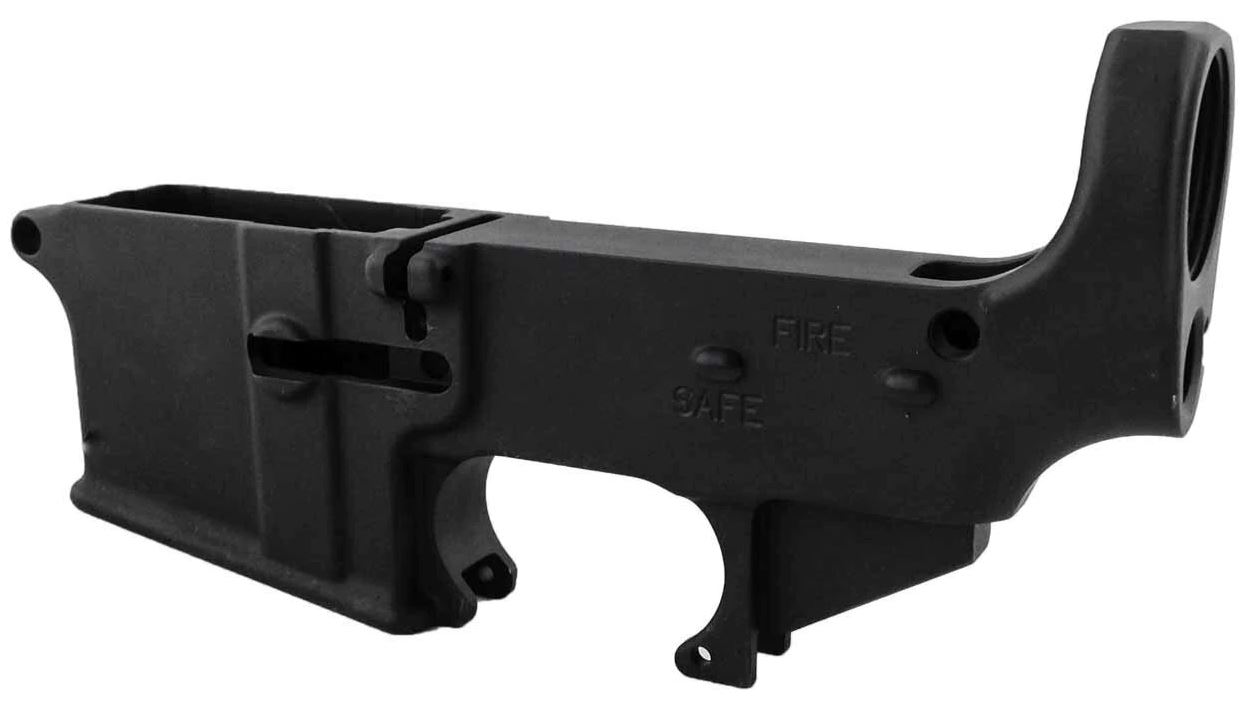
Drop-in triggers are compatible with virtually all AR lower receivers, including 80% lowers, whether billet or forged.. They use the same trigger and hammer pins, or they come with upgraded pins. They provide the same general design when it comes to the hammer and disconnector, so they'll interface with any upper receiver and bolt carrier, too.
2. Free-Float Handguard
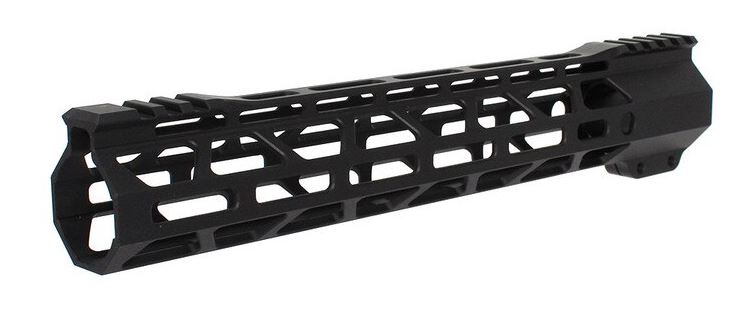
Next to an upgraded trigger, the free-float handguard is one of the most effective and easiest-to-install upgrades you can throw on your AR-15 to improve performance and feel. Most factory handguards are heavy, and some are two-piece handguards that affix directly to the barrel's gas block. This is considered an "outdated" handguard and is typically found nowadays on M4 and M16 clones. If you're gunning for the most performance, you need a free-float handguard. They're typically much lighter, and they improve accuracy by removing all that weight from the barrel.
Free-float handguards are every bit as tough as a drop-in or two-piece guard, yet the install is much simpler. These units bolt directly to the barrel nut and use the receiver to align the handguard and top rail. Because they units bolt to the barrel nut, they're easier to install and remove as needed. Most units weigh much less than one pound. The 12" M-Lok skeletonized rail above, for example, only weighs around 9.5 ounces installed. Compared to factory guards (especially two-piece units) which weigh close to, or more than, one pound, this is a major weight savings. These guards are also more ergonomic and comfortable to hold. They make shooting more enjoyable by transferring more weight to the center and rear of the rifle or pistol, allowing recoil to be managed more easily.
M-LOK, Keymod, and Picatinny rails
Picatinny rails were once the height of AR handguard tech, and they're the type of attachment system most often found on factory and two-piece handguards. But now, there are M-LOK and KeyMod rail attachment systems which provide excellent strength and "rail estate" for mounting your accessories, without the bulk and heft of all those Pic rails. Since M-LOK and Keymod are "female" rail systems, they reduce overall weight compared to the bulk "male" attachments of Picatinny rails. After all, it makes little sense to have 12" of rail when you only require 1" or 2" of space to install an accessory.
This guide covers rail systems in more detail.
3. Angled Handguard Foregrip
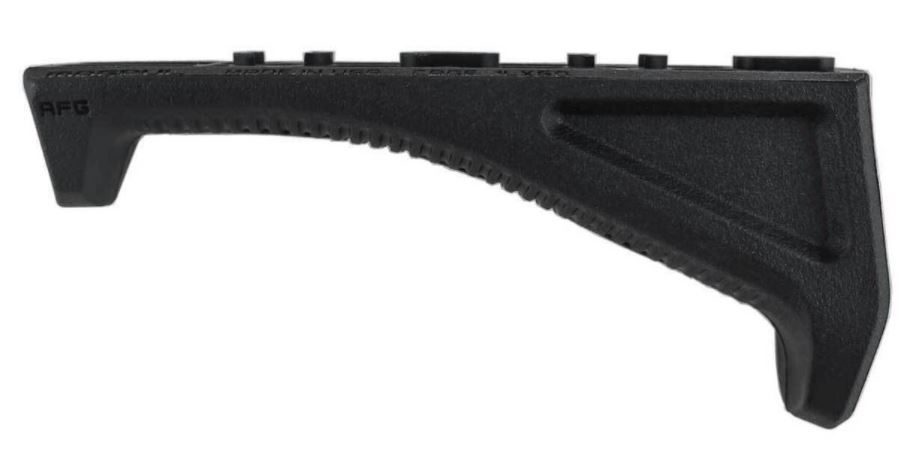
Once you've replaced your handguard with a quality, lightweight unit, you'll want to complement that recoil control with something that can be supported by your offhand. An angled foregrip is a simple, small, ultra-light way to keep even more of a grip on your handguard. Most angled grips, like the Magpul Grip here, interface with M-LOK or Keymod. Options still exist for Picatinny rail attachments, too.
Can I install this on an AR pistol?
AR-15 pistols are intended (according to the ATF, at least) to be fired with one hand. They say that installing a vertical forward grip constitutes making a a short-barreled rifle, or SBR, since a vertical forward grip is also designed to be held with the non-shooting hand. However, current regulations state that an angled foregrip is not considered, well, a forward pistol grip. So they can be installed (at the time of this publication) on an AR pistol. Be sure to check local, state, and federal laws even still. The ATF likes to engage in secret, in-house decision-making and they often change the rules (without any legislation being passed) on a whim.
4. Backup Iron Sights (BUIS)
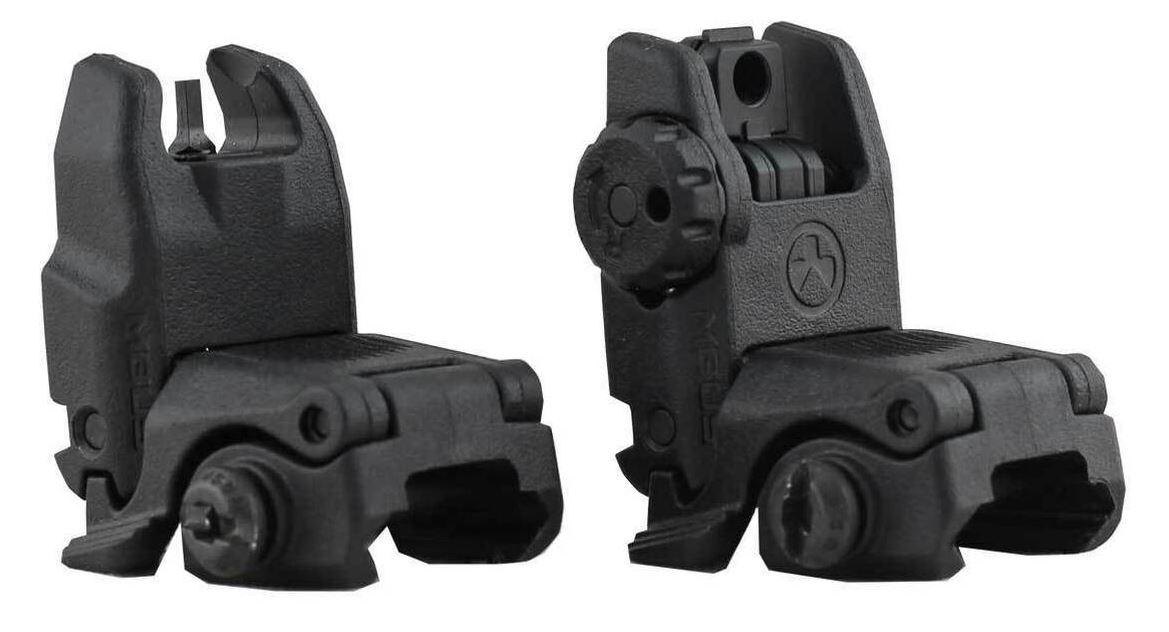
Flip-up irons, like these Magpul MBUS sights, provide an excellent alternative to the old-school fixed front sight bus and rear A2-style AR-15 sights. Those original sights tend to provide at least some level of interference with modern optics, requiring you to "co-witness" your optic with the sights. Instead, you can do away with all that and invest in some BUIS that flip up and down as required. Sights like these are much less likely to break, since they fold flat and sit relatively flush against your top Picatinny rail when not in use. They're often made from polymer or aluminum, reducing weight yet again.
Although BUIS irons are "minimalist" compared to fixed iron sights, they provide all the same functions and capabilities. That includes proper front and rear adjustments for windage and elevation, and large and small peep sights for high and low-light shooting.
5. A Good Ole' Sling
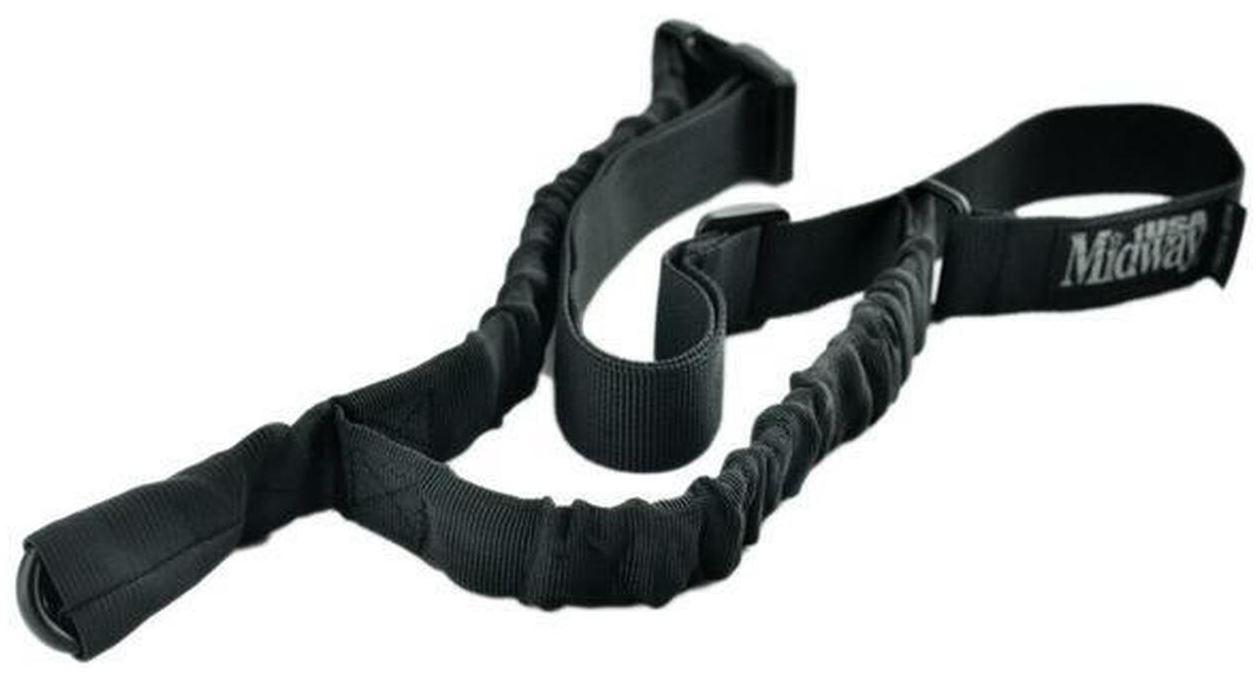
It's often the most overlooked accessory you'll (not) find on ARs. Visit any range, and you'll notice most black rifles sitting on the benches don't have a sling. Grabbing a sling is a great investment. Employed properly, a sling that provide additional support and accuracy, depending on your shooting stance. It provides a great way to simply hand your AR rifle or pistol without having to deal with resting it on a bench or in the dirt. Experienced shooters always have a sling on their AR for a reason. A single-point sling is the simply, most affordable, and arguably one of the most comfortable when it comes to simply walking or standing with your AR. They can be installed directly to the buttstock, pistol brace, or latch plate, which allows your AR to hang at the low-ready.
6. Pistol Brace (for AR Pistols)
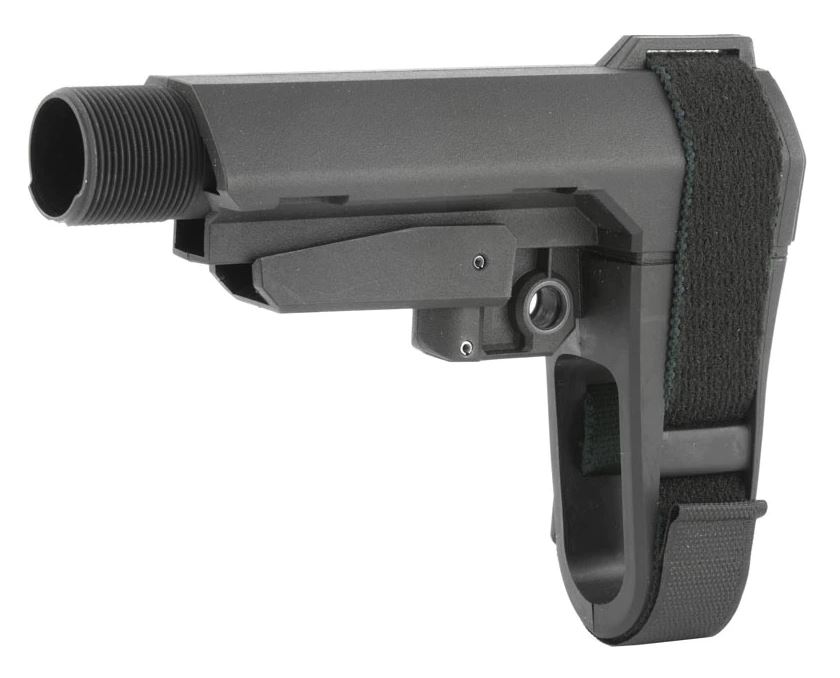
AR pistols most often ship with an exposed buffer tube, and that provides next to no comfort. Worse, it provides no stability when it comes time to send rounds downrange. A must-have upgrade is the pistol stabilizing brace. Although similar in appearance to a buttstock, the pistol brace is intended to be strapped to the forearm of your shooting hand, allowing for much better recoil mitigation and overall control. The ATF says incidental shouldering of a pistol brace is allowable (at the time of publication). Again, remember to check local, state, and federal laws before doing so. Those rules are subject to change without notice. The SBA3 pistol brace is one of the most popular, providing a lightweight yet ergonomic brace that's affordable and universally compatible with any mil-spec lower receiver.
FAQ
Q: Are these parts compatible with all ARs?
A: Yes. The AR9, AR-15, and LR-308/AR-10 work with the parts we've listed here. Importantly, the .308 AR uses a larger barrel nut, so AR-15 handguards will not work.
Q: What do I need to install a drop-in trigger?
A: All you need is a punch set and small hammer. You can either reuse the trigger pins found in your receiver, or your drop-in trigger will come with new pins.
Q: Do drop-in triggers work with a 9mm and .308 lower?
A: Yes. Drop-in triggers are universal and work with any AR lower receiver.
Q: Are charging handles interchangeable, too?
A: Yes. Charging handles are universal for 9mm, 5.56/.223, and .308 receivers.
Recap
We've covered all the best upgrades you should consider for your AR:
- Drop-in trigger
- Free-float handguard
- Angled foregrip
- Back-up iron sights
- A sling, whether single- or multi-point
- Pistol stabilizeing brace (for AR pistols only)
DISCLAIMER: If you are new to the world of DIY gun building, you likely have a lot of questions and rightfully so. It’s an area that has a lot of questions that, without the correct answers, could have some serious implications. At GunBuilders.com, we are by no means providing this content on our website to serve as legal advice or legal counsel. We encourage each and every builder to perform their own research around their respective State laws as well as educating themselves on the Federal laws. When performing your own research, please be sure that you are getting your information from a reliable source.

